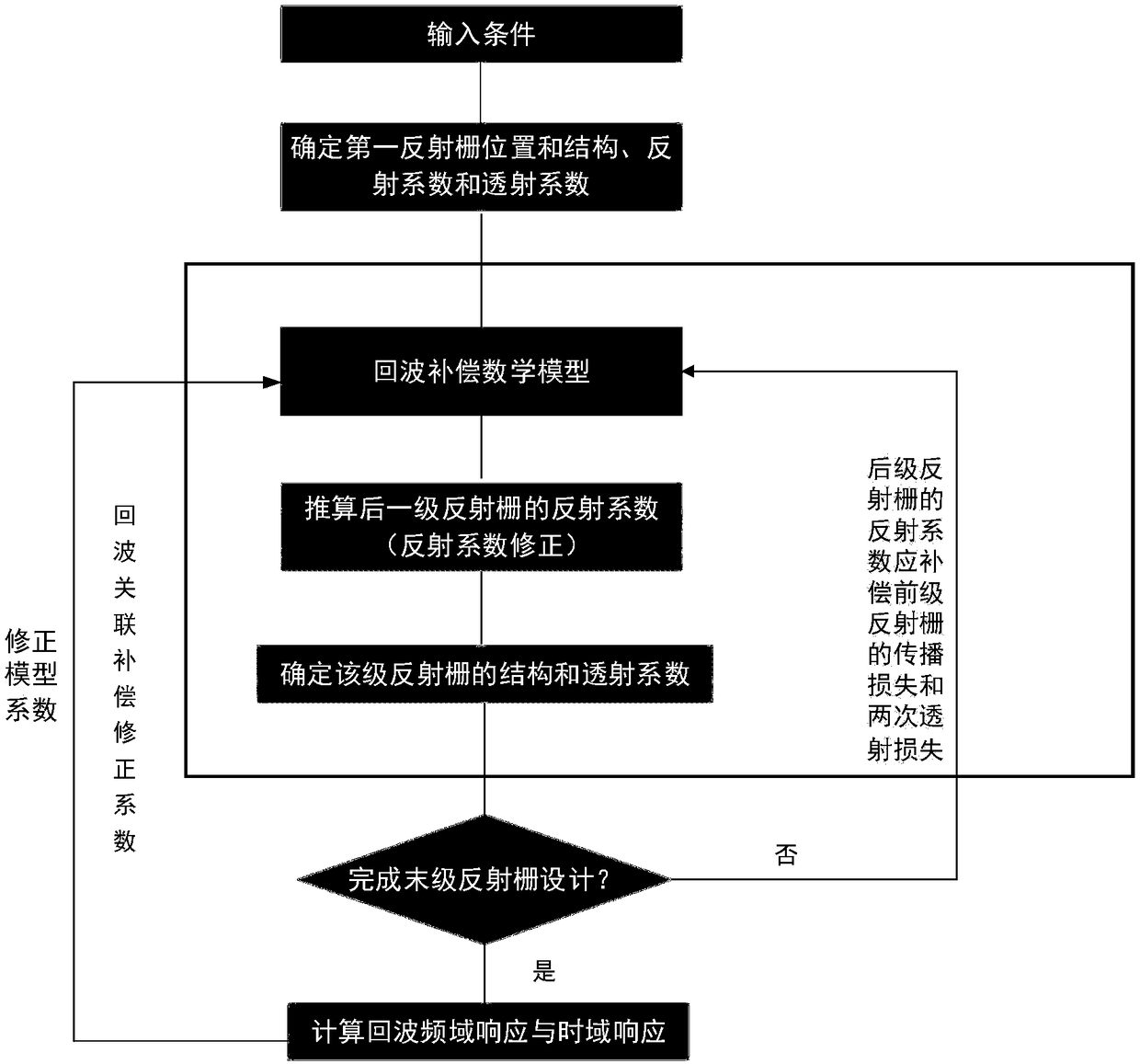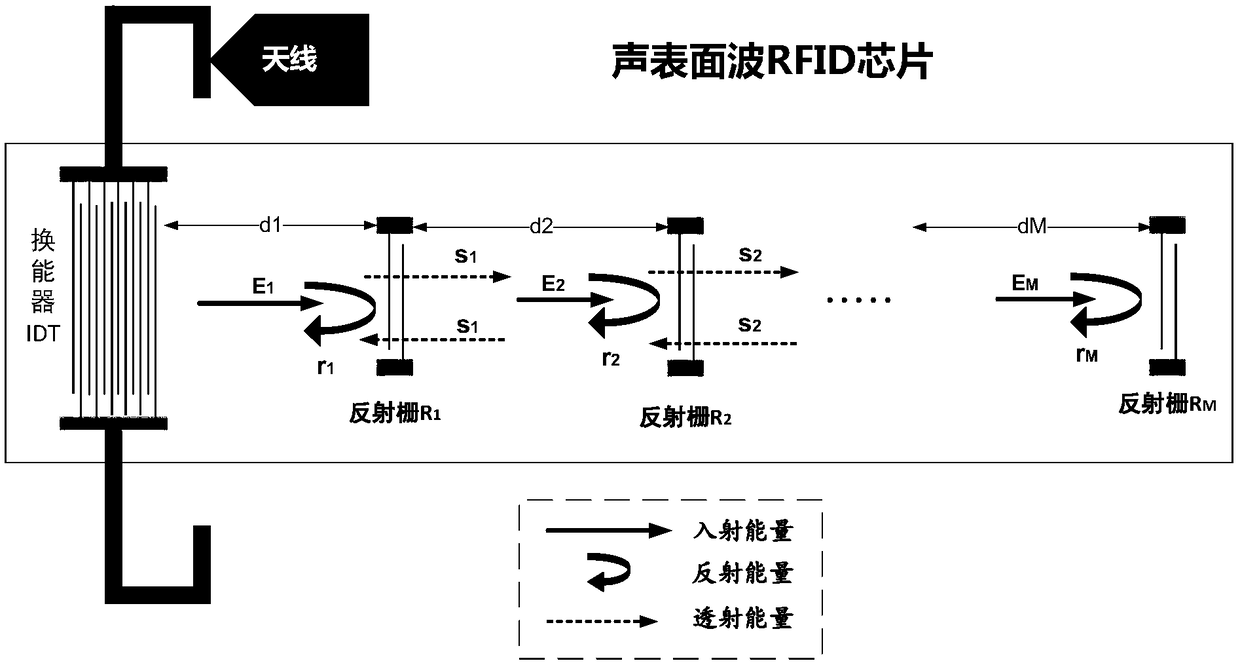Surface acoustic wave RFID chip reflection coefficient design method based on echo energy compensation
A technology of reflection coefficient and surface acoustic wave, applied in CAD circuit design, design optimization/simulation, calculation, etc., to achieve good detection and recognition effect, good echo performance, and the effect of mass production and preparation
- Summary
- Abstract
- Description
- Claims
- Application Information
AI Technical Summary
Problems solved by technology
Method used
Image
Examples
Embodiment Construction
[0025] The present invention will be described in detail below with reference to the accompanying drawings and examples.
[0026] The present invention provides a method for designing the delay line reflection coefficient of a surface acoustic wave RFID chip based on echo energy compensation. For a surface acoustic wave RFID chip in a pulse position encoding mode, a mathematical model of echo compensation is established to guide the design of each The reflection coefficient of the first-stage reflection grating, its core idea is to compensate the propagation loss and the two transmission losses of the previous-stage reflection grating with the reflection coefficient of the rear-stage reflection grating, so as to ensure the consistency of the echo energy (amplitude) of each level of reflection grating, and obtain Better detection and recognition effect.
[0027] The overall structure of the surface acoustic wave RFID chip is as follows: figure 2 As shown, including 1 IDT tran...
PUM
 Login to View More
Login to View More Abstract
Description
Claims
Application Information
 Login to View More
Login to View More - R&D
- Intellectual Property
- Life Sciences
- Materials
- Tech Scout
- Unparalleled Data Quality
- Higher Quality Content
- 60% Fewer Hallucinations
Browse by: Latest US Patents, China's latest patents, Technical Efficacy Thesaurus, Application Domain, Technology Topic, Popular Technical Reports.
© 2025 PatSnap. All rights reserved.Legal|Privacy policy|Modern Slavery Act Transparency Statement|Sitemap|About US| Contact US: help@patsnap.com



